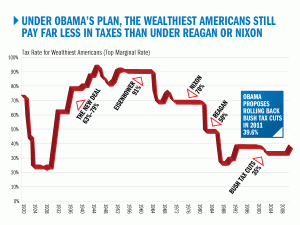Let’s chat about Goldman Sachs profits, why they’re making so much money, and why it’s a problem rather than a case of “good for them”.
Market Manipulation Zero Hedge has made the case that Goldman could be using their program trading to move the markets in the direction they prefer, as the largest program trader in the market, twice as large as the next biggest. The case was reasonably strong, but was made stronger when the New York Stock Exchange suddenly decided to stop releasing the data on program trading which made it possible to track what Goldman was doing. Coincidence? Possibly. It is also possible that you may wish to purchase this fine bridge I have for sale, only ever driven over by a little old lady.
Government Bailout Money Through AIG Goldman received 13 billion from AIG, after receiving 5.9 billion before the bailout, which caused AIG to collapse (not that it wouldn’t have eventually). The 13 billion is a straight government giveaway, since if AIG had been allowed to go under, GS would have received cents on the dollar, at best.
Goldman Sachs is now a bank. And that means they get money at bank rates from the Fed, which means their cost for money is as low as it is possible to be, which increases their profits.
Goldman Sachs has contacts at the highest levels of government. Glenn Greenwald laid this out best, with a stunning list of occasions in which Goldman was present for decisions or where Goldman Sachs employees (the most significant of whom was Hank Paulson) were hired for key spots in the Treasury department. He also notes that Goldman’s executives were the top campaign donors for the year. I’d say they’ve gotten their money’s worth.
Privatize the Profits, Socialize the Losses. Or, as a friend put it “Golman trades high volatility”. Which is to say, they take risks. Big risks. If those risks fails (as when they were AIG’s largest customer), well then, they get bailed out by the government.
Heads Goldman Sachs wins. Tails the taxpayer loses
It’s a good game, if you can be in on it. And this is only an overview. For example there is some speculation that Goldman may have been front running other traders (knowing what trades were coming up and putting in their orders first to take advantage of it.)
The larger issues are simpler. Goldman was bailed out by government money and is now making lots of money. They’ve paid back the money from TARP, but they haven’t paid back the 18 million paid to them through AIG. They should.
Worse than that is the possibility that they are manipulating the market. I make no claims that they are, but the evidence is that they could be. The market is thin enough, and dominated enough by program trading that they could move the market if they chose. It may just be coincidence that they’re having their best year ever, while normal traders who rely on normal market correlations got slaughtered:
The last few days the the market has traded “organically.” I and many other market participants have noted that prior to the week before July 4th the market had been acting “very odd” – normal correlations between interest rate, foreign exchange the the stock markets had been on “tilt” for the previous couple of months, with the amount of “tiltage” increasing dramatically in the last three or four weeks. In fact, many of my usual indicators that I use for daytrading had become completely useless. Suddenly, just before the July 4the weekend, everything started correlating normally again. I have no explanation for this “light-switch” change but it aligned almost exactly with the day the NYSE had “computer problems” and extended trading by 15 minutes. Was there a configuration change made to their networking infrastructure, one asks?
Again, this could be nothing but an odd market, and have nothing to do with Goldman Sachs. Sometimes indicators do go haywire, and this is an unusual period.
But the perception amongst market participants and the general public is increasingly that the market is crooked and working to the benefit of insiders, especially Goldman Sachs. Given Goldman’s clout, both financially and politically, this is not an unreasonable belief when the market is trading so thinly. But normal investors aren’t going to want to get back into the market if they believe that it is being manipulated.
The SEC, Fed and the New York State Attorney General Andrew Cuomo need to do a full investigation. The results need to be revealed. The US is already, in its economic policies, which preferentially bail out the rich and important, leaving ordinary people in the dust, trending towards becoming a bannana republic. Lack of certainty about market manipulation on the flagship New York Stock Exchange is the sort of thing which will keep investors out.
And, to put it simply, the US needs foreign investors, the deep liquidity, back, and it needs them back in a big way. There are policies which would not require them to come back, but those policies have not been followed. If the US wants to run these huge deficits (not just government, but trade and monetary), money needs to recycle back to the US. Yes, the balance of payments deficit is lower than in the past, and the savings rate is up, but the deficit is not down enough and the savings rate is not up enough, especially given the huge debt overhang.
Goldman is a problem, but more than that it is a symptom of the deeper malaise in the US, where the system works for connected rich insiders and doesn’t work for ordinary people.

